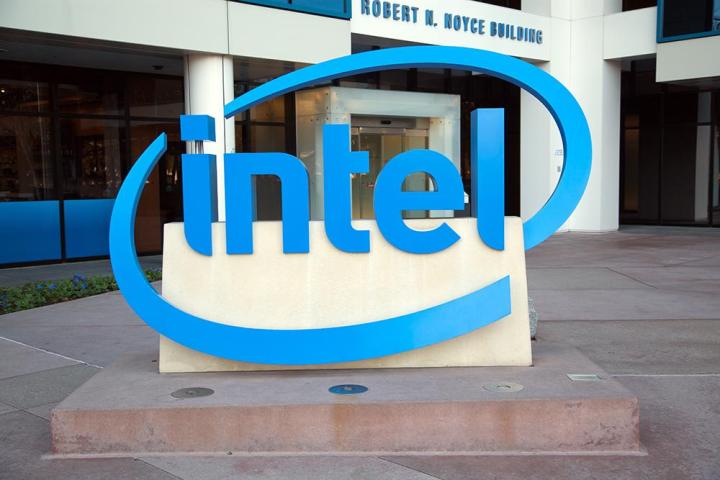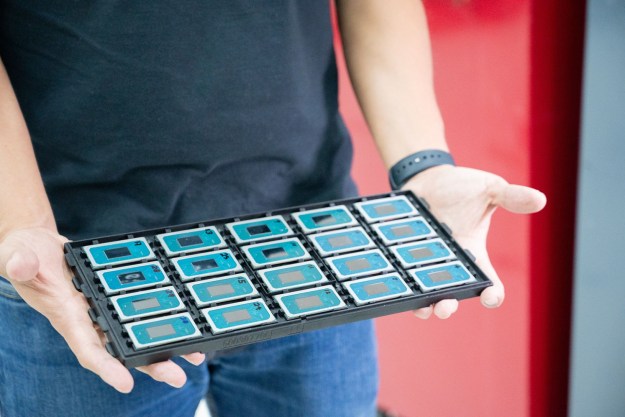
The desktop “J” processor family includes the Pentium J4205, the Celeron J3455, and the Celeron J3355. They’re based on Intel’s Goldmont CPU core technology, with base clock speeds ranging from 1.5GHz to 2GHz. Compared to the previous generation of “Braswell” processors, the new lineup has a higher thermal envelope at 10 watts, whereas Braswell consumes only 6.5 watts. The new chips also now support six PCIe 2.0 lanes, up from four lanes with Braswell. However, like Braswell, the Apollo Lake chips support only up to 8GB of system memory.
In addition to those details, Intel’s new Apollo Lake processors now support Windows 10 Modern Standby, which essentially mimics the instant on/instant off model we see with smartphones and tablets. This was first introduced in Windows 8 as Connected Standby for systems with SSDs, but now the Windows 10 version expands to “rotational media” like hard drives and hybrid drives. To help reduce power when idle, Modern Standby will limit network activity without disconnecting the device entirely from the network.
Finally, the desktop chips rely on Intel’s Gen9 graphics technology, up from Gen8 used in the older Braswell chips. The turbo clock frequencies range from 700MHz to 800MHz, and the number of execution units have increased a small amount as well – at least with the higher-end Pentium J4205 part, this is. In a nutshell, these execution units essentially perform the operations and calculations as commanded by an installed program.
| Desktop Lineup | Pentium J4205 | Celeron J3455 | Celeron J3355 |
| Cores | 4 | 4 | 2 |
| Threads | 4 | 4 | 2 |
| Base Clock | 1.5GHz | 1.5GHz | 2GHz |
| Turbo Clock | 2.6GHz | 2.3GHz | 2.5GHz |
| Graphics | HD 505 | HD 500 | HD 500 |
| EUs | 18 | 12 | 12 |
| Graphics Turbo Clock | 800MHz | 750MHz | 700MHz |
| Price | $161 | $107 | $107 |
Next we have the “N” mobile processor lineup, which consists of the Pentium N4200, the Celeron N3450, and the Celeron N3350. Unlike their desktop counterparts, these chips have a thermal envelope of six watts, the same power used by the older Braswell chips. Strangely enough, the base clock speeds are 1.1GHz across the board, while the turbo clock speeds range between 2.2GHz and 2.5GHz. The clock speeds of the internal graphics component ranges from 650MHz to 750MHz.
Other than that, the mobile chips are similar to their desktop siblings — Goldmont processor cores, Gen9 integrated graphics, support for six PCIe 2.0 lanes, support for Microsoft’s Modern Standby mode in Windows 10, and support for up to 8GB of system memory. The pricing is similar too, ranging from $107 to $161.
| Mobile Lineup | Pentium N4200 | Celeron N3450 | Celeron N3350 |
| Cores | 4 | 4 | 2 |
| Threads | 4 | 4 | 2 |
| Base Clock | 1.1GHz | 1.1GHz | 1.1GHz |
| Turbo Clock | 2.5GHz | 2.2GHz | 2.4GHz |
| Graphics | HD 505 | HD 500 | HD 500 |
| EUs | 18 | 12 | 12 |
| Graphics Turbo Clock | 750MHz | 700MHz | 650MHz |
| Price | $161 | $107 | $107 |
As Anandtech points out, we don’t know much about Intel’s Goldmont processor core architecture, only that it’s a “significant” upgrade from the previous Airmont and Silvermont processor cores. However, because the new chips have adopted Intel’s Gen9 GPU architecture, customers should see better support for games relying on DirectX 12 (not that they’ll run well, mind you). Video performance may be improved too thanks to the GPU’s efficient use of the overall processor’s limited memory bandwidth.
Intel says that the Pentium N4200 “Apollo Lake” processor provides more than 30 percent better CPU performance, and more than 45 percent better graphics performance, than the older Pentium N3710 “Braswell” chip. The number from the CPU aspect was generated by SYSmark 2014, whereas the GPU number stems from 3DMark Skydiver.
Expect to see Apollo Lake-based products to roll out in affordable laptops and desktops over the coming months.
Editors' Recommendations
- It just became the perfect time to buy a last-gen Intel CPU
- Everything we know about Lunar Lake, Intel’s big next-generation chips
- Intel CPU gaming crashes are causing an uproar
- A major era in Intel chip technology may be coming to an end
- Intel’s CPUs just got way more confusing


